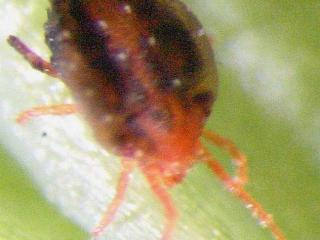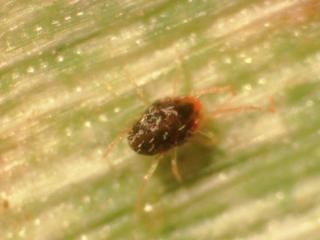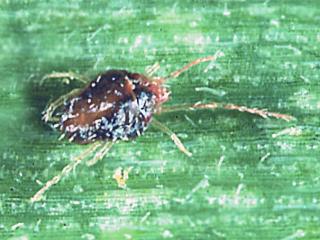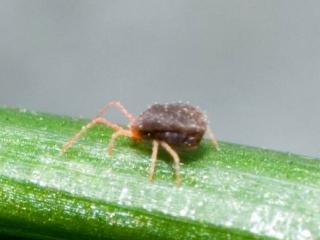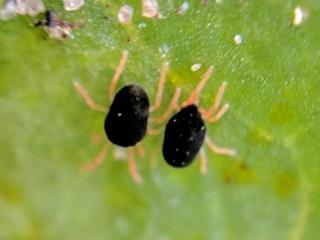Bryobia mites, brown wheat mites and other early season pest activity
Bryobia mites, lucerne flea and vegetable weevils
- Merredin
- Kellerberrin
- Tammin
- Cunderdin
- Meckering
- Wickepin
Joshua Cope (Landmark) reports finding bryobia mites in Bonita canola near Merredin.
Dan Taylor (DKT Rural Agencies) has been finding bryobia mites in emerging canola crops at Kellerberrin, Tammin, Cunderdin and Meckering. In some cases mite numbers and moisture stressed seedlings prompted crops to be sprayed with omethoate. Dan has also seen small numbers of vegetable weevils and lucerne flea at Meckering, but not at damaging numbers.
A user of the Planfarm Herbicide Guide app has also reported bryobia mites on volunteer canola in seeded pastures near Wickepin.
Brown wheat mites
- Mullewa
- Narrogin
- Northern and central areas
There have been some reports to PestFax recently of bryobia mites which, using the photos submitted through the mobile reporter app and physical samples, have been later confirmed as being brown wheat mites (Petrobia latens). Brown wheat mites have been found in Barlock lupins at Mullewa and on volunteer barley near Narrogin.
Brown wheat mites have also been detected in multiple sites in the northern and central agricultural areas by DPIRD staff recently, especially on cereals and lupins.
There are a variety of mite pests that can attack emerging crops and confusingly they have similar dark bodies and reddish legs.
Correct identification of mites is important!
Brown wheat mites can be confused with bryobia mites very easily. This highlights the need for correct identification of mites for effective mite control. To diagnose brown wheat mite from bryobia, have a close look with a hand lens or mobile phone macro lens and you will see that the front legs of brown wheat mites are long like bryobia, the body is more globular like redlegged earth mites and blue oat mites, and the hairs on the body are longer and thinner than bryobia which have shorter thicker hairs which look like the end of a spatula.
Bryobia mites have a flattened ‘pie-dish’ shape body with distinctively long front legs. They prefer warmer conditions.
Redlegged adults are 1mm long with a black body and eight red-orange legs. RLEM have a cold temperature requirement (generally seven days below 16°C average daytime temperatures) before the eggs are triggered to hatch. RLEMs do co-exist with blue oat mites so make sure you correctly identify what mites you are finding. Blue oat mites look similar but have a red dot on their back.
Emerging canola cotyledons and young seedlings can often tolerate low to moderate numbers of mites without sustaining plant losses, especially under good growing conditions. When mite numbers are considerable or seedlings are moisture stressed, correct identification is critical for effective control, as different species can vary in their susceptibility to certain insecticide groups, either naturally or through insecticide resistance. Mites also can be very difficult to identify without the use of a hand lens magnifier or microscope.
Growers and consultants can report or request the identity of mites by using the photo attachment function in the PestFax Reporter app.
Tips on how to correctly identify earth mite pests can also be found at cesar’s Common earth mites of broadacre crops and pastures in southern Australia YouTube video and GRDC’s GRDC Crop Mites Back Pocket Guide.
For insecticide information refer to DPIRD’s 2019 Autumn/Winter Insecticide Guide.
For more information about diagnosing and managing different mites refer to the departments;
- Diagnosing bryobia mite
- Diagnosing brown wheat mite
- Diagnosing blue oat mite
- Diagnosing redlegged earth mite pages.
For more information on invertebrate insects contact Dustin Severtson, Development Officer, Northam on +61 (0)8 9690 2160 or Svetlana Micic, Research Officer, Albany on +61 (0)8 9892 8591.

